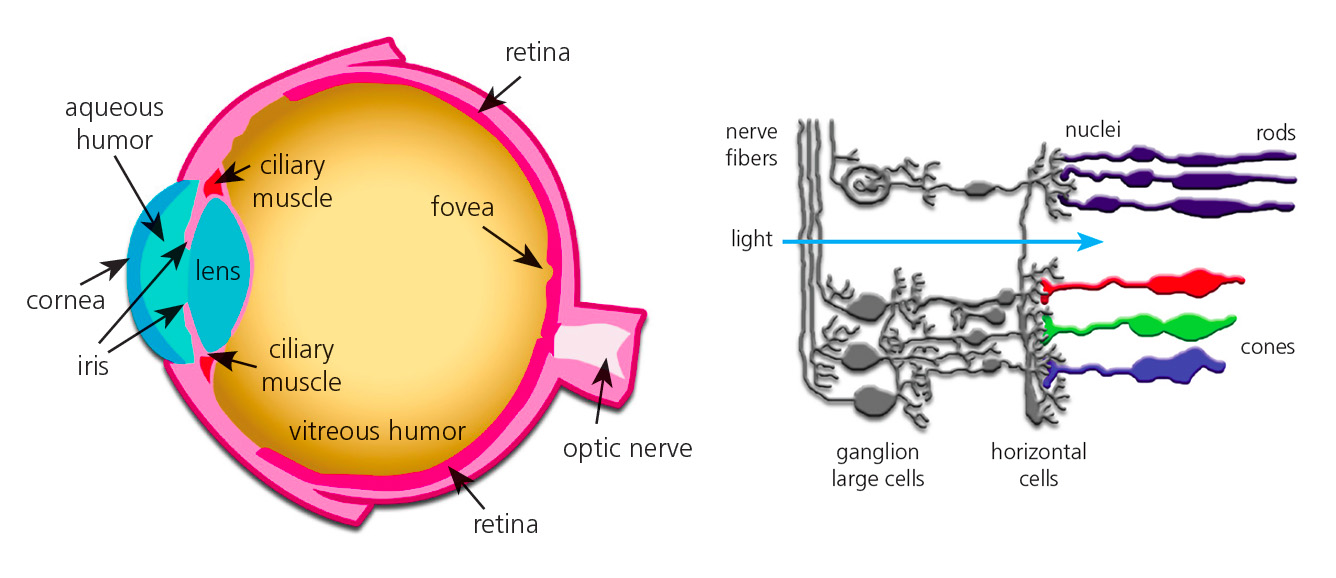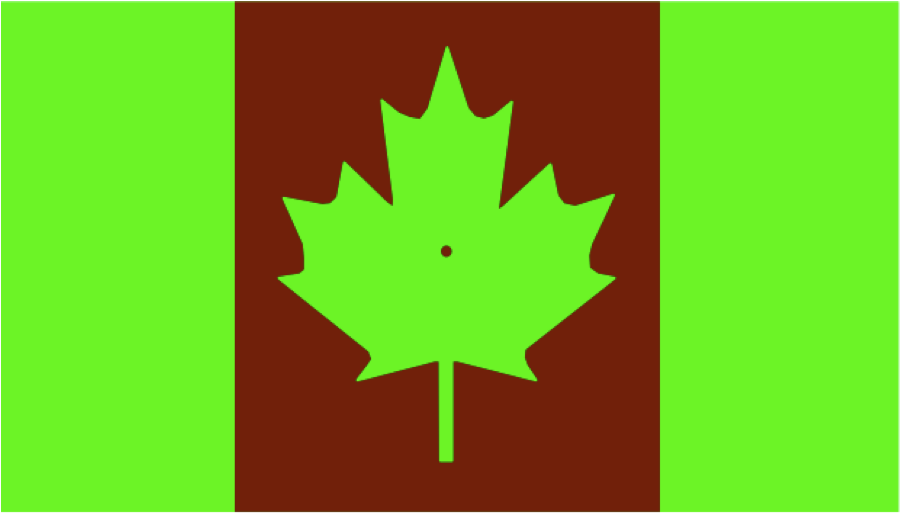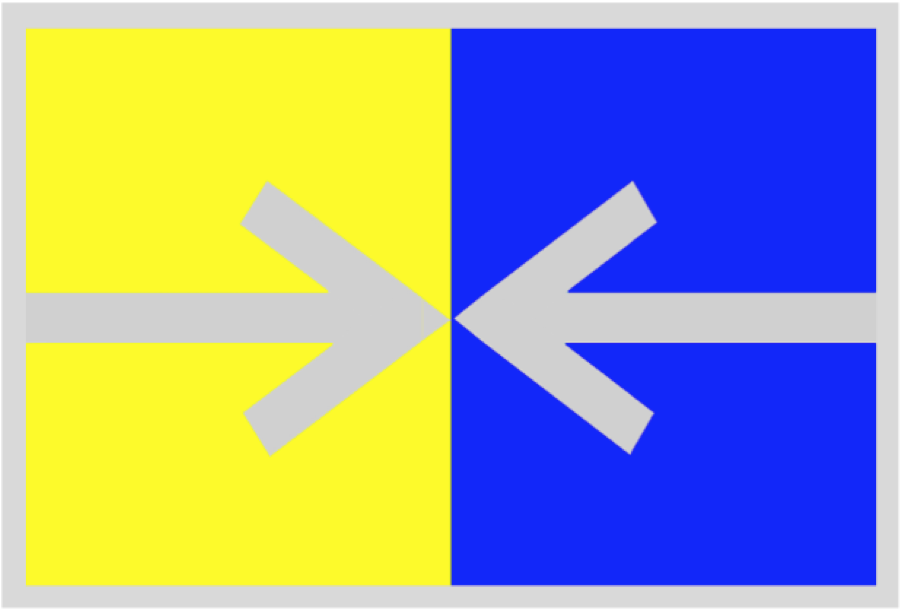There are many things that affect our ability to see color. In some cases, it doesn’t matter if the red you see is the same shade I see. A barn is a barn, right? But for those who work in an industry where color evaluation is part of the job, it IS important… VERY important.
In our color perception series, we’re discussing the many factors that affect how we see color and what colorists can do to ensure that the color they see is the color they are supposed to see. Today we’ll take a closer look at the human eye and some of the ways our environment can influence what we see.
The Eye
Let’s start with a bit of anatomy.
The process of seeing color is quite amazing. When light enters through the eye’s cornea, the lens puts the object into focus and creates an inverted image at the back of the eye on the retina.
Rods can’t distinguish colors. Their job is to detect changes in light and adapt the eye to help us see, even when it’s dark. Cones allow us see color. There are three kinds, each responsible for seeing red, green or blue, respectively. RGB… the three primary colors that combine to create the multitude of color beauty we see in our world.

A cross section of the human eye and magnification of the retina wall showing nerves that capture light and send it to rods and cones for analysis.
Rod and cone cells are sprinkled all over the retina, so most of our eye is able to see color and navigate through changing light conditions. However, there’s a small dimple in the back, called the fovea, which only contains cones. The fovea is our specialized area for color vision.
Once the eye has done its job to capture light and color data, it sends everything along the optic nerve to the brain for analysis. Within a split second, the brain reports what we are seeing. Red barn. Remarkable, right?
Of course, there’s a lot that can go wrong…
Retinal Fatigue
For starters, our eyes get tired very easily. Stare at this image for about 30 seconds, then close your eyes.
What you see is called an afterimage. The cones in our eyes contain red, green and blue color sensitive photo-chemicals. When we stare at an object for longer than a few seconds, these chemicals start to deplete, and the cones begin sending incorrect information to our unsuspecting brains.
If everything looks a little weird after staring at that image, it’s okay. Your eyes will readjust in a few minutes. The best thing to do is close your eyes and let them rest, or look at a light, neutral gray shade until you notice colors starting to look normal again.
Pop Quiz: What’s the best day to view color?
Friday, when you’ve come to know what to expect from your job that week? Wednesday because it’s hump day?
TGIM! It’s actually Monday. Just like our bodies, our eyes benefit from a weekend of rest and recovery.
Background Effects
Here’s another one. Are the arrows the same color?
They sure don’t look like it, but they are. Don’t believe me? Follow the gray box around the image. The gray color remains the same.
The arrow on the left looks darker and bluer because the yellow background strongly affects our eye’s ability to correctly perceive the color. This is a phenomenon called simultaneous contrast – yet another trick that is played on our poor eyes.
Although this was an obvious example, background effects are subtly at play all day long, and we don’t even notice. When your job is evaluating and comparing colors, it is important to be aware of all of these different effects that can change the way you see color. As if that isn’t enough, there’s more!
Lighting
Light plays a HUGE role in color perception. We talked about this a couple of weeks ago in Color Perception Part 1. It’s actually the color of the light that determines the color your brain will perceive. Think about how the appearance of your yard changes as the sun moves across the sky. At sunrise everything has a yellowish-orange cast. At noon on a sunny day, the environment is cooler and more blue. And once the sun sets, everything is cast in shadow. It is the color of light that makes things appear to change throughout the day, even though the objects themselves remain the same.
Environmental Impacts on Color Judgement
So what do these environmental issues mean for those of us who analyze and compare color? We must understand the influence of light on color perception, be aware that our eyes can be tricked, and we must utilize the workarounds created for us by color science engineers.
- A tired eye cannot make good color judgments, especially after being over-stimulated by a strong color. Rest your eyes before viewing, view quickly, and rest again before the next evaluation.
- Always be aware of your environment. Surrounding colors can make a color look different. When judging color, use a light booth to ensure that nothing is clouding your view.
- Recognize the type of light that is illuminating your color. A light booth can help you control the lighting conditions and ensure consistency.
- Use a color measurement instrument to capture color data. A colorimeter or spectrophotometer simply measures the reflected light from the target sample area. It doesn’t even know surrounding colors exist.
Up Next…
Unfortunately the environment is not the only obstacle we face when judging color. Soon we’ll take a look at some of the human traits that affect color vision and how we can accommodate them for better color assessment.
Color Perception Blog Series |
|---|
| Part 1: The Effect of Light |
| Part 2: The Impact on Manufacturing |
| Part 3: The Tricks the Environment Plays on Our Eyes |
| Part 4: Human Traits |


